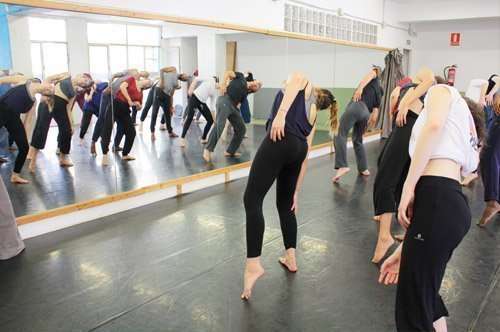Contents
WHAT IS PHYSICAL THEATRE? – INTRODUCTION
Physical theatre, an art form that fuses movement, gesture and expression, has significantly shaped the landscape of the performing arts throughout the 20th century. In essence, physical theatre transcends conventional boundaries and uses the body as its primary means of expression. Thanks to the innovative contributions of renowned figures such as Etienne Decroux, Vsevolod Meyerhold and Jacques Lecoq, physical theatre has evolved into a dynamic form that challenges both actors and dancers to explore the complexities of movement and expression.
A DEFINITION OF PHYSICAL THEATRE
Physical theatre is characterised by its emphasis on the physicality of performance, moving away from the spoken dialogue typical of traditional theatre. Instead, physical theatre communicates narratives, emotions and ideas primarily through movement, gesture and expression. This immersive mode of narratives engages audiences across linguistic barriers and invites them to immerse themselves in a world in which the body becomes the primary vehicle for conveying the inner realm of emotions, conflicts and desires.


PIONEERING PHYSICAL THEATRE FIGURES
To understand what physical theatre is, it is important to look back at its history, and its evolution. The evolution of physical theatre owes much to the pioneering work of people like Etienne Decroux, Vsevolod Meyerhold and Jacques Lecoq. Each of these visionaries contributed unique ideas and techniques that continue to shape the landscape of physical performance.
Etienne Decroux, French actor and researcher, is considered the father of modern mime. His pioneering work in corporal mime focused on unleashing the expressive potential of the body, through a precise study of body articulation and chronology, allowing time and processes to be visible in the body of the performer achieving a better organicity of acting. His work and the evolution of his technique allows the actor to explore the relations between movement and emotion, form and content. Decroux’s teachings challenged performers to delve into the subtleties of physical expression, inspiring generations of artists to push the boundaries of their work.
Vsevolod Meyerhold, Russian theatre director and theorist, is famous for his development of ‘biomechanics’, a systematic approach to actor training based on the principles of movement and gesture. Meyerhold’s emphasis on precision and physicality revolutionised actor training and laid the foundations for the emergence of physical theatre as a distinct form.
Jacques Lecoq, French actor and mime, is famous for his holistic approach to actor training, which incorporated elements of movement, mask work and improvisation. Lecoq’s emphasis on playful exploration and physical expression transformed the way actors approached character development, encouraging them to fully embody their roles through movement and gesture.
CORPOREAL MIME: A BRIDGE BETWEEN THEATRE AND DANCE
Corporeal mime represents a vital bridge between text-based theatre and dance, offering performers a versatile platform for expression. Drawing on both disciplines, body mime explores the intersection of gesture, emotion and narrative, providing performers with a rich palette through which to convey meaning.
This fusion of text and movement allows performers to communicate complex narratives with depth and nuance. Unlike traditional mime, which often relies solely on silent acting, body mime can integrates spoken dialogue, sounds and singing, allowing performers to explore a dynamic range of expression through movement and speech.
In addition, corporeal mime shares affinities with dance, especially in its exploration of movement and expression. Modern dance, pioneered by choreographers and dancers such as Martha Graham and Doris Humphrey, emphasises precision, control and emotional authenticity of movement, providing dancers with new ways of creative expression.
THE NEED FOR PRECISION AND CONNECTION
In physical theatre, precision and connection are central notions. Every gesture and every expression are important and this involves rigorous training in movement, acting and improvisation. By mastering the principles of corporeal mime, performers can make their expression authentic and profound.
Similarly, in dance, performers can benefit from incorporating the principles of corporeal mime into their practice, broadening their artistic horizons and enhancing their expressive range, introducing theatricality in their movement.
In conclusion, physical theatre is a dynamic and vibrant art form that opens the boundaries of performance and create new ways of considering the body in action on stage.
MOVEO´S PHYSICAL THEATRE TRAINING.
Moveo offers training in physical theatre and corporeal mime, which is structured around two main areas of focus. The first area of focus is in-depth training in corporeal mime, which includes practical knowledge in various areas such as technique, improvisation, repertory, composition, and creation practices. This area of focus makes up 85% of the syllabus.
The second area of focus is the integration of other subjects such as contemporary dance, physical training, and voice work. This integration is intended to enhance the expressive possibilities of the student and makes up 15% of the syllabus.
The training takes place daily from October to June, with an international group of students, and it aims to transmit the knowledge and experience of the teaching team, which is composed of professional artists, and to form new generations of physical theatre practitioners. The training is designed to create a strong technical and artistic base on which the student can base their artistic journey.
TO KNOW MORE: